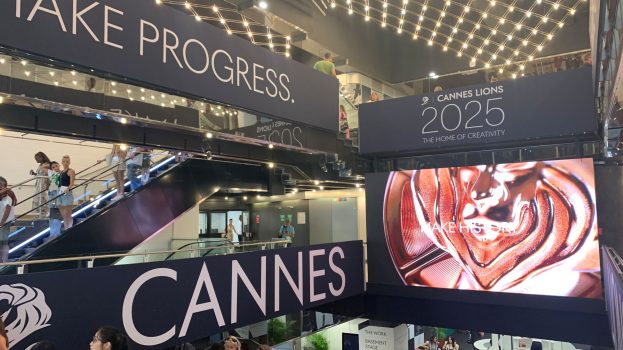The DDB team is blogging for strategy from SXSW Interactive in Austin, Texas. For more on the team’s experiences at the festival, visit DDBdoesAustin.com.
By Jon Mandell, copywriter, Tribal DDB
If you hate the feeling that you might be missing out on something great, the interactive portion of South by Southwest could be enough to drive you off the deep end. There are nearly 3,000 speakers presenting sessions over the course of five short days. Most attendees will only have the chance to attend 15 to 20 of these sessions, which adds up to a whopping 0.5% of the total experience. If you feel like you’re missing out at SXSWi, it’s because you are.
On day two, I decided to take the advice of a coworker and surrender my day to the great geek gods above. I highlighted a handful of sessions that sounded interesting, then resolved to go wherever the day might take me without wasting energy worrying about catching every great presentation.
It’s a good thing that I embraced this new philosophy, because I proceeded to get completely lost on the way to my first session of the morning. After a minute spent treading water in a sea of the digitally savvy, I saw a familiar face in the crowd and followed them into a session that happened to be on my shortlist. A team from Bravo was discussing the use of transmedia during the latest season of Top Chef. They shared some interesting insights, not least of which was the fact that their transmedia program (featuring an online video component called Last Chance Kitchen) started out as an example of innovation driven by desperation. They went multi-platform as an experiment to drive viewership, and ended up creating NBC’s most successful web series to date. They attributed this success to the fact that they gave their audience the ability to influence broadcast content with online participation.
For the second session of the day, we squeezed into a crowded room to see Austin Kleon, the author of Steal Like an Artist, and Kirby Ferguson, the creator of the video series Everything is a Remix. I will admit that I planned on seeing this session ahead of time. The concept of “stealing like an artist” is familiar to most everyone who works in advertising, so this seemed like an appropriate session for us agency folks to attend. Kleon and Ferguson discussed the building blocks of creativity, which they identified as copying, transforming and combining. They even busted out a great Harry Potter analogy: With the proper foundation, they suggested, any muggle can learn the magic of creativity.
Next, I decided to pop into the first keynote of the week, delivered by Baratunde Thurston, a comedian, author, and Onion correspondent who talked about how humourous online content is being used as a revolutionary tool in parts of the world where freedom of the press is non-existent. He managed to keep the room laughing despite the fact that he was covering some heavy subject matter. He also suggested that humour should be built into the web at the code level, allowing us to increase usability and add a bit more humanity to the digital experience.
The last session that I made it to before being overcome with fatigue was presented by Anne Mack, director of trendspotting at JWT New York. The session was called “FOMO: how brands tap into fears of missing out.” This seemed like the perfect way to end the day, since FOMO is such a major part of SXSWi and had been plaguing me since the moment that I arrived in Austin. Mack showed some of the ad industry’s more blatant attempts to take advantage of FOMO. Some were serious, and some were a bit more tongue-in-cheek, like this example:
[iframe_youtube video=”iprIaySbcdU”]
Mack also identified a few ways that brands can leverage FOMO in their marketing efforts:
- Enhance FOMO to motivate consumers to take desired actions.
- Offer exclusive experiences that will generate FOMO among a consumer’s social connections.
- Give consumers the chance to join in on things that usually cause them to feel left out.
- Offer something just as good as the things that cause FOMO.
- Offer tools for avoiding FOMO.
- Assure people that they’re not actually not missing out on much, and that they should just enjoy the moment (with your product in hand, of course).
As for the larger question of whether leveraging FOMO is a good thing, Mack’s position is that it depends entirely on what you’re marketing.
As I sit writing this post, I am missing out on a presentation by Rainn Wilson, the actor who plays Dwight Schrute on The Office. It’s pretty much guaranteed to be hilarious. At the very same moment, dozens of equally interesting presentations are taking place in venues around Austin. I am missing out, but I am no longer afraid. I’ve given in to SXSWi and decided to leave my FOMO at the door. I hate to admit it, but It feels pretty good.
























